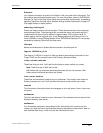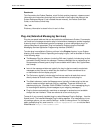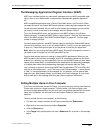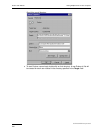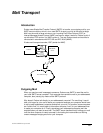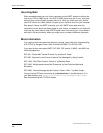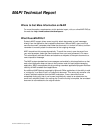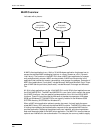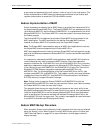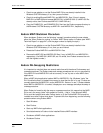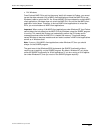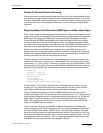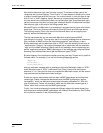
Eudora Implementation of MAPI Eudora User Manual
249
QUALCOMM Incorporated
a user name and password to the mail system in order to “log on” to the mail system. (The
Eudora implementation of MAPI does not implement authentication since Eudora itself
requires authentication to access the POP3 and IMAP4 servers.)
Eudora Implementation of MAPI
Eudora implements a subset of the full MAPI library by providing two “replacement DLLs”
for the standard Microsoft MAPI DLLs. The Eudora EUMAPI.DLL is a replacement for the
16-bit Microsoft MAPI.DLL and the Eudora EUMAPI32.DLL is a replacement for the 32-bit
Microsoft MAPI32.DLL. The Eudora MAPI DLLs must be located in the same directory as
the Eudora program.
The Eudora MAPI DLLs implement the standard Simple MAPI functions detailed in the
MAPI specification. The MAPI specification also defines Extended MAPI functions,
however, the Eudora MAPI DLLs implement only the Simple MAPI subset.
Note. The Eudora MAPI implementation requires all MAPI client applications to use only
the Simple MAPI functions supported by the Eudora MAPI DLLs.
MAPI client applications which use only the basic Simple MAPI calls will generally not be
able to tell the difference between the Eudora MAPI DLL functions and the Microsoft MAPI
DLL functions.
It is important to understand that MAPI client applications load the MAPI DLL libraries at
runtime whenever they need to access the MAPI functions. Each client application
expects to find either the 16-bit MAPI.DLL file or the 32-bit MAPI32.DLL file in a common,
application-independent location (generally the Windows SYSTEM directory). Therefore, it
is not sufficient to copy the EUMAPI.DLL and EUMAPI32.DLL Eudora DLL files into the
Windows SYSTEM directory alongside the standard Microsoft MAPI.DLL and
MAPI32.DLL files. For client applications to find the Eudora MAPI DLLs, the DLL files
must be named MAPI.DLL and MAPI32.DLL. This creates a conflict since most Windows
installations will have the MAPI.DLL and MAPI32.DLL files preinstalled in the Windows
SYSTEM directory to support Microsoft Exchange.
Note. Eudora is able to swap the Eudora EUMAPI and EUMAPI32 DLLs with the
Microsoft MAPI and MAPI32 DLLs when the user launches Eudora, and is able to unswap
the Eudora MAPI DLLs when the user exits Eudora.
This approach gives the user the most flexibility and preserves the user’s ability to use
Microsoft Exchange and/or Microsoft Fax when Eudora is not running. If we “permanently”
install the Eudora MAPI DLLs over the existing Microsoft MAPI DLLs, then applications
(such as the Microsoft Fax service bundled with Microsoft Exchange) which rely on the
Microsoft MAPI DLLs will no longer work. This is clearly unacceptable for users who need
to use MAPI for both Microsoft Exchange and Eudora.
Eudora MAPI Startup Procedure
When launched, Eudora runs the following “swap” procedure when the user has selected
either the “Always” or the “When Eudora is running” MAPI Server option in Eudora (see
“MAPI Technical Report” on page 247 for more information; click the page number to
display the topic.)



